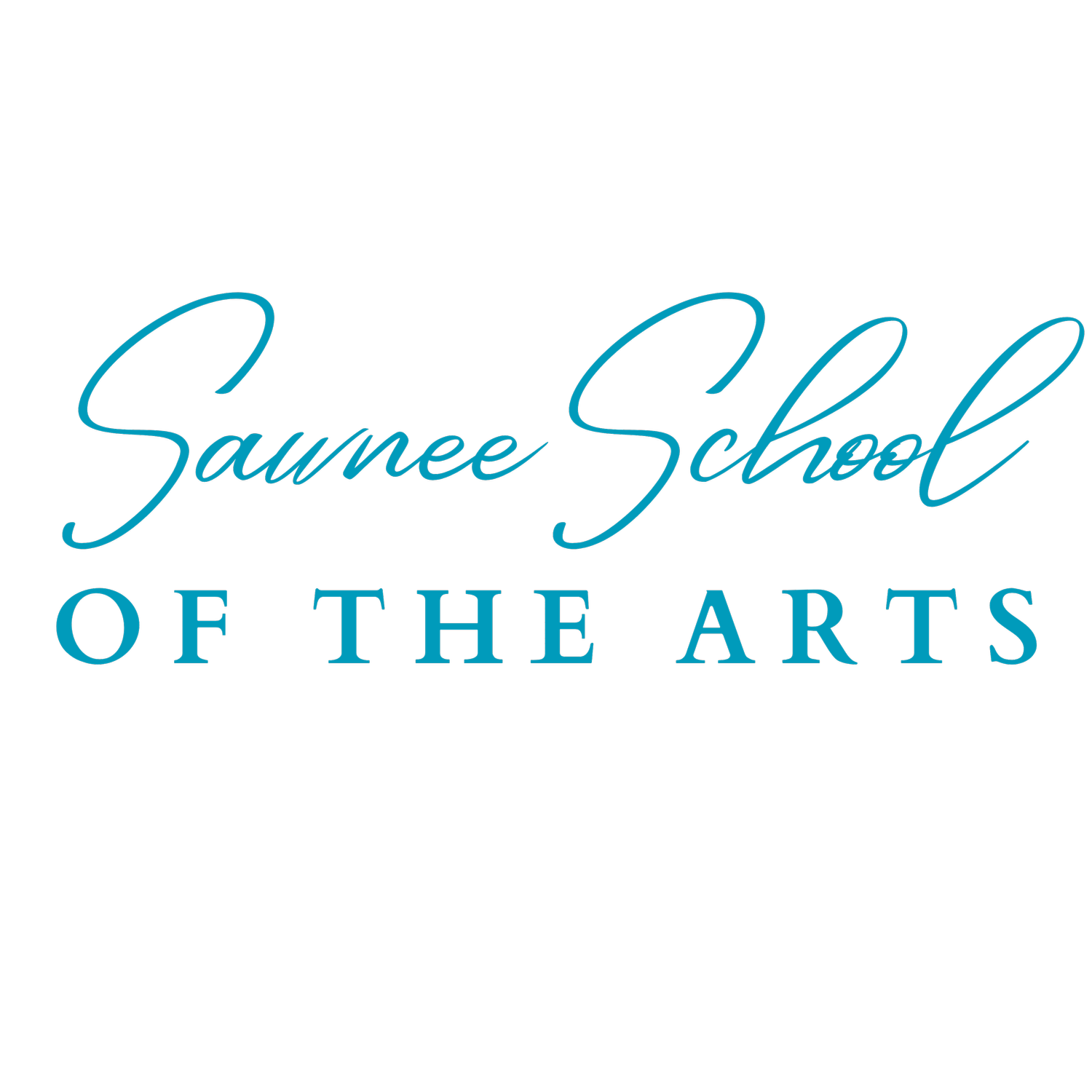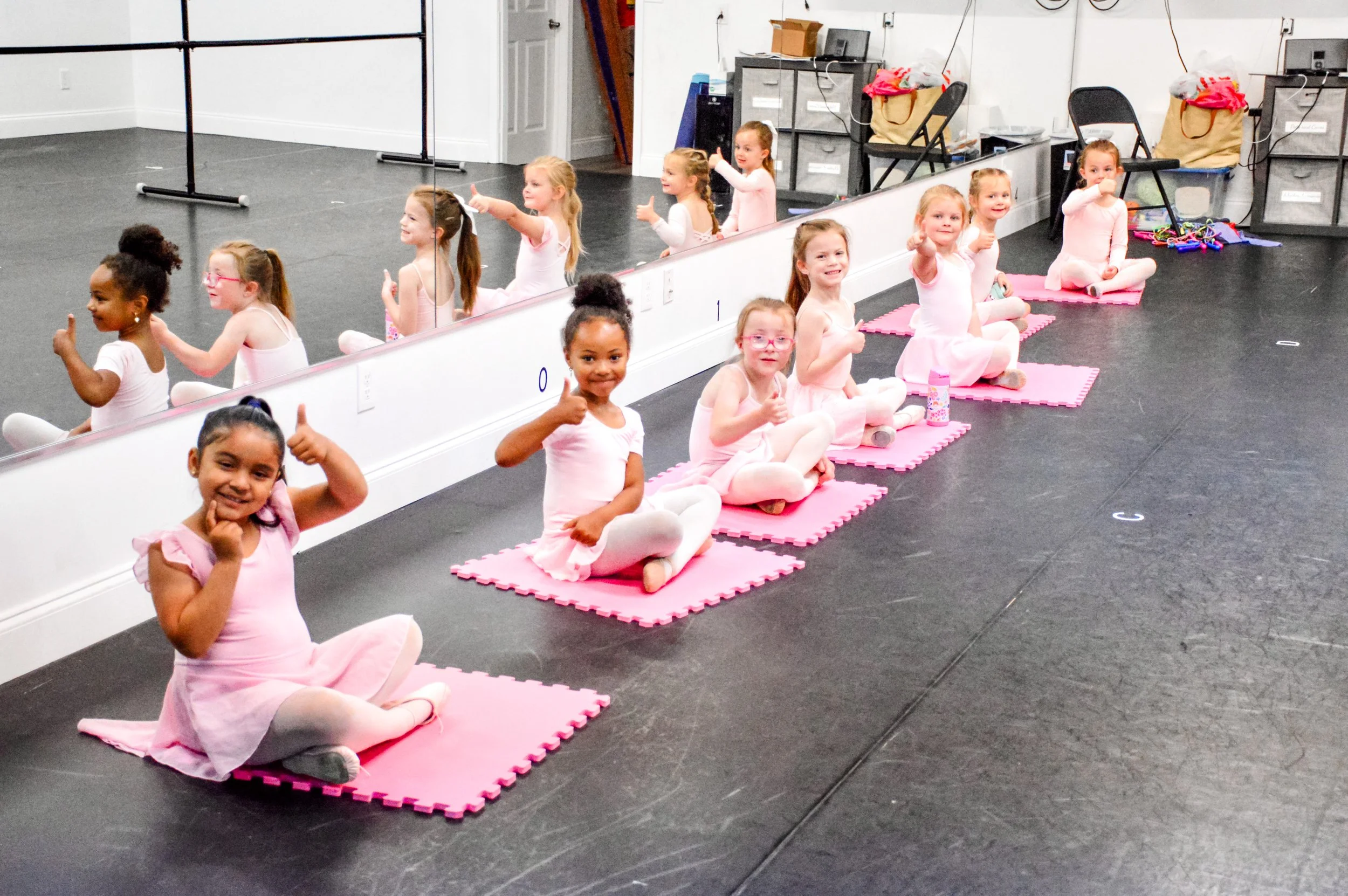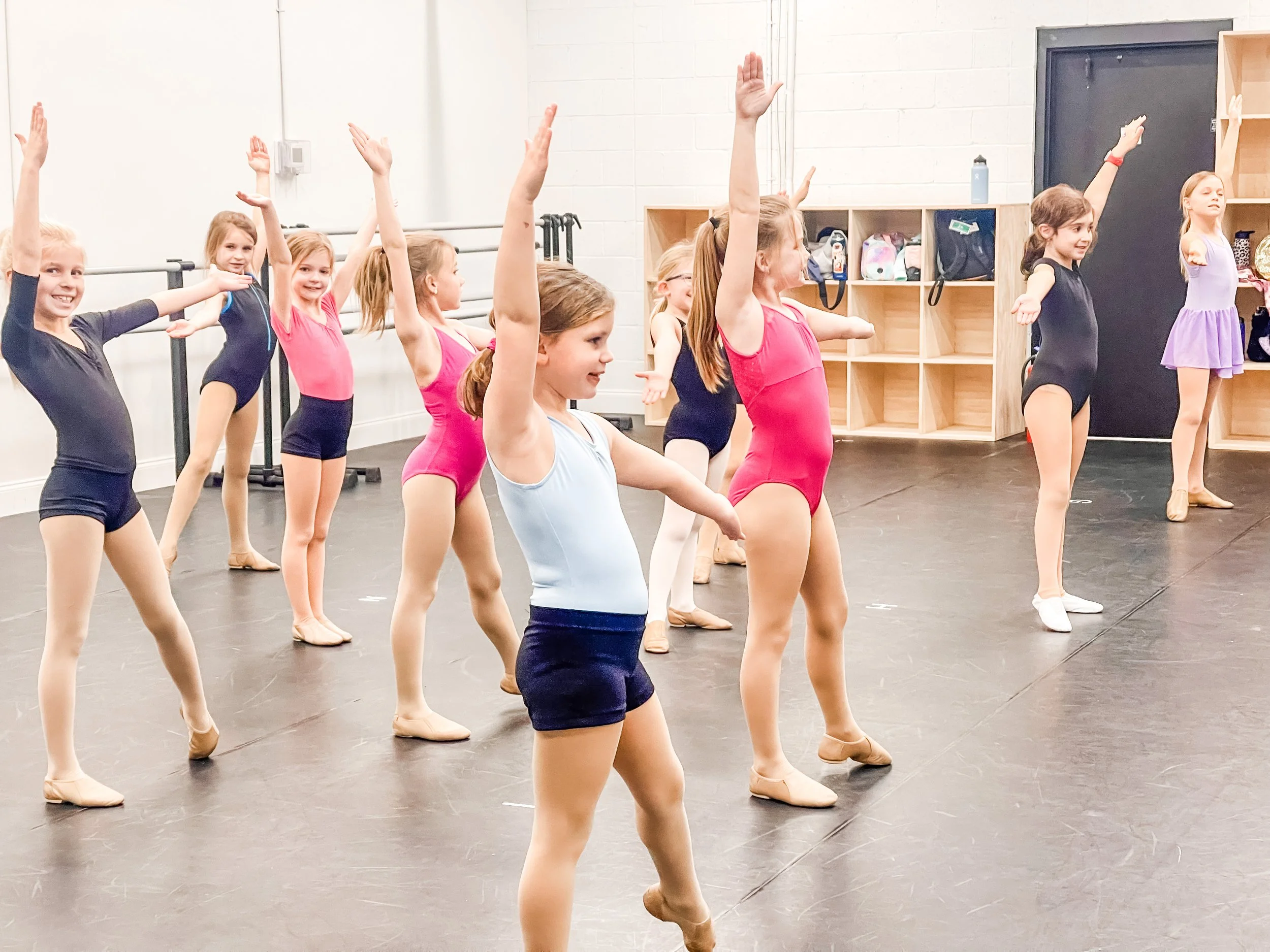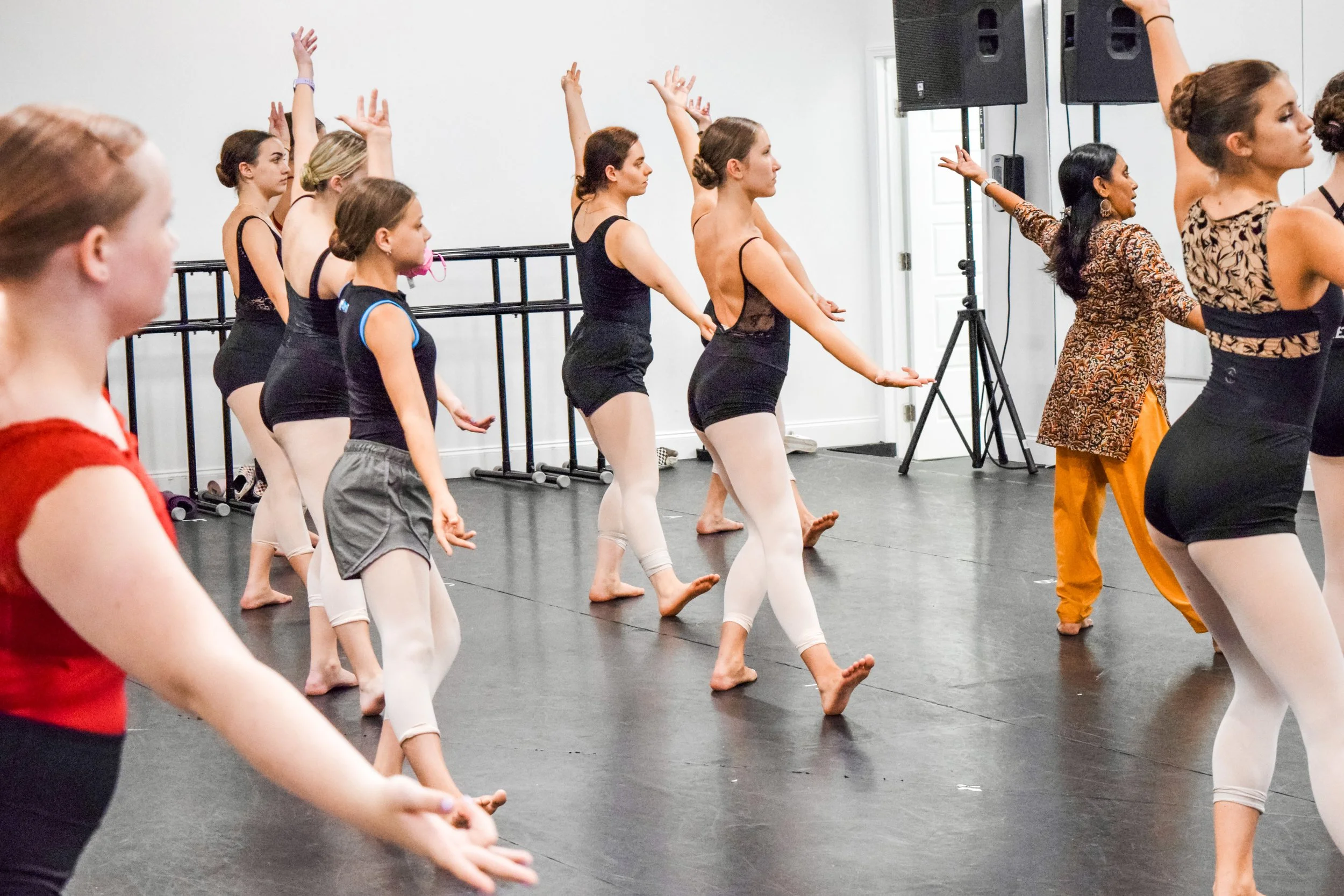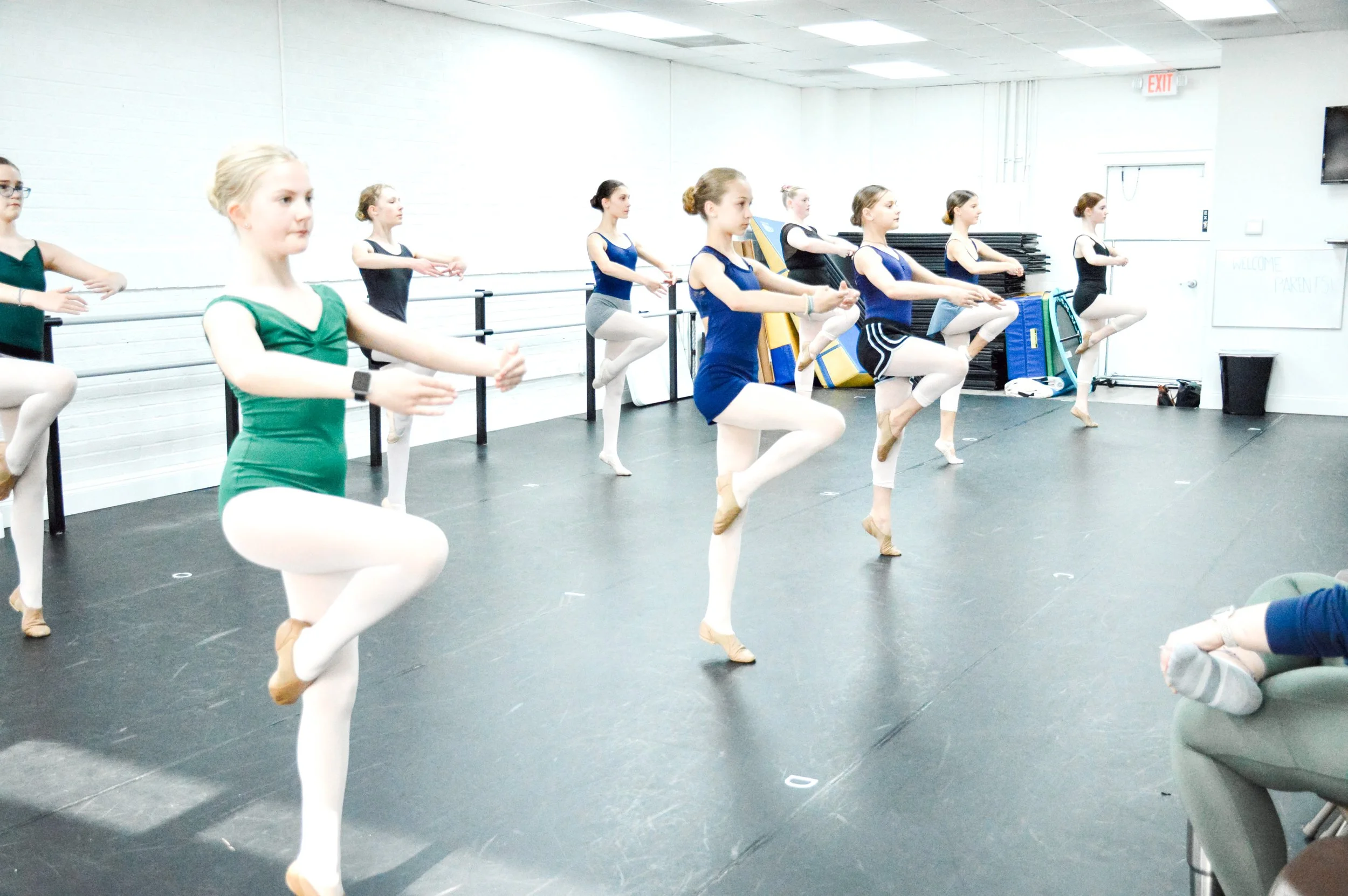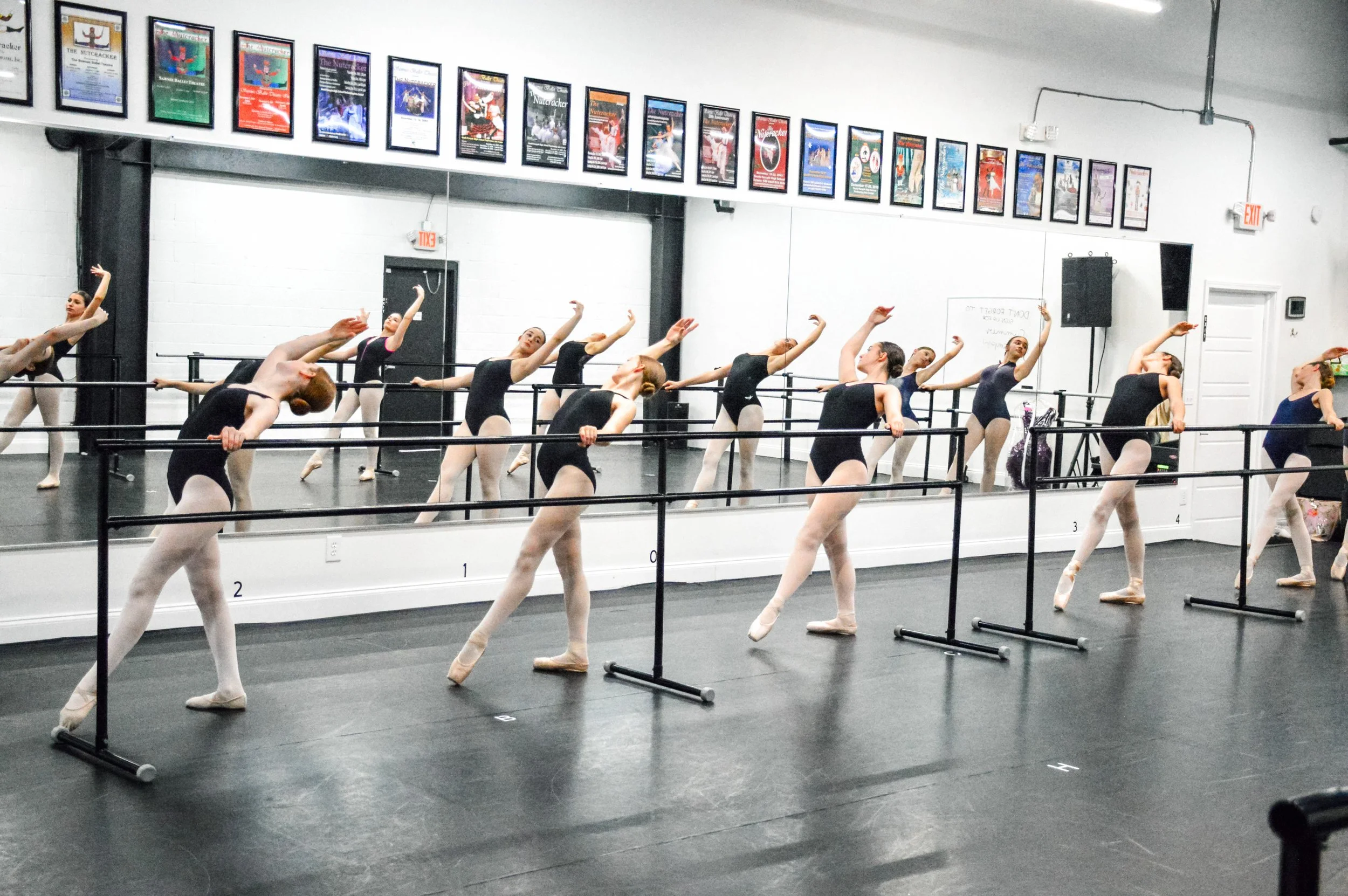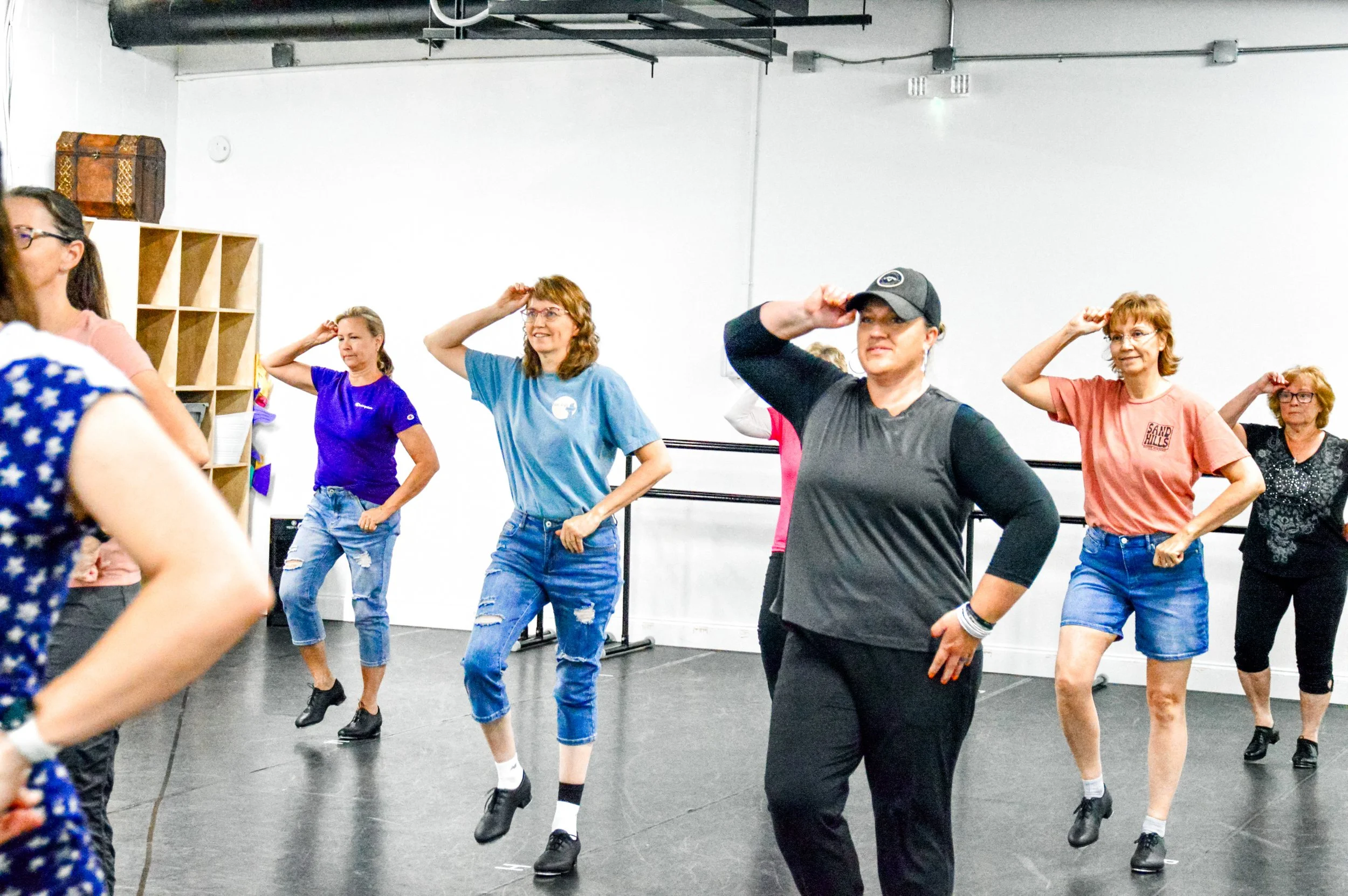Year-Round Programs
We offer dance classes for beginners through advanced.
Class Descriptions
-
Ready, Set, Dance combines Jazz, Hip Hop, and a whole lot of fun. This gender-neutral curriculum is the coolest dance class for the preschooler of today!
Jazz – Develop muscle strength, control and balance and achieve coordination milestones like skipping and sequencing.
Hip Hop – Bust out some ice cold moves just like Freeze to fresh hip hop tracks that help children build confidence.
Music – Develop the musical ear, explore creativity and promote personal mastery with originally composed songs that have musical cues.
Props – Have fun on the parachute, being super heroes and balancing your beanbag. These resources support tactile awareness and strengthen fine motor coordination and control.
-
Designed for children ages 2-3 Years. Music, movement, balance and the basic dance steps are introduced in a fun, friendly and positive manner. We keep these little ones moving with ribbon wands, bean bags, bubbles, hula hoops and more. This is a great introductory class for dancers that have little experience in group activities, are new to a classroom setting, or are not quite ready for a 45 minute long session.
-
A delightful introduction to the world of dance, our ballet classes for ages 3 - 4, and 4 -5 years old are presented in a manner appropriate to children in this age range.
The primary goals for our pre-school creative movement programs are for each child to:
• love dance and feel the joy of movement
• master basic movement skills, including hopping, skipping, leaping, chasse-ing, marching, jumping, and galloping
• be introduced to simple ballet vocabulary: plie, releve, tendu, passe, bourrees in parallel position
• acquire basic rhythm skills, including finding the downbeat, clapping, tapping, drumming in quarter-note time.
The curriculum includes the use of props, musical rhythmic games, imaginative play encouraging expression through music, modified ballet positions, natural coordinating skills, simple steps and dances.
Children who study dance improve their coordination, fundamental motor skills, listening skills, spatial awareness, rhythmic ability, musicality, and creativity as well as gain confidence, enhanced concentration, and an appreciation for the arts.
-
Students are introduced to basic ballet technique, fundamental movements, simple steps, combinations, patterns and dances. They will use the barre to gain strength and to learn technique, vocabulary, flexibility, and coordination which they will then apply to center and across the floor combinations.
Ballet is not just for serious dancers, but for all students of dance who want to improve posture, coordination and agility. Alignment, placement, strength, flexibility and technique are achieved at the barre and in the center. Dancers will improve overall wellness through participation in activities that challenge the body and mind, stimulate the imagination and enhance self-esteem!
-
Students build upon basic ballet technique, fundamental movements, simple steps, combinations, patterns and dances. They will spend longer at the barre to gain strength and to learn technique, vocabulary, flexibility, and coordination which they will then apply to center and across the floor combinations.
Ballet is not just for serious dancers, but for all students of dance who want to improve posture, coordination and agility. Alignment, placement, strength, flexibility and technique are achieved at the barre and in the center. Dancers will improve overall wellness through participation in activities that challenge the body and mind, stimulate the imagination and enhance self-esteem!
-
Classes have more structured barre combinations, and center work becomes more advanced with an emphasis on technique, simple allegro and adagio combinations.
Though not compulsory, students at this level are encouraged to take two ballet classes per week.
We have found that the students taking two ballet classes per week enjoy their lessons more and make greater progress. They gain a new awareness and enthusiasm for dance. These students are better prepared for the next level of advancement.
-
This level builds upon the student’s previous ballet training and is an introduction to the physical demands and responsibilities required for pointe work.
Pre-Pointe students will learn specific technical movements to prepare and strengthen the legs, ankles, and feet while also working on exercises to develop their core muscle strength. Repetition of these skills will prepare young dancers for success en pointe in the future.
Dancers may remain in the pre-pointe level another year to insure they have developed proper alignment and strength before progressing to pointe.
Dancers will also learn about theraband exercises, how to properly sew and tie pointe shoe ribbons to their ballet slippers, and proper foot care.
Students in the Pre-Pointe level are required to take two Ballet Classes per week.
-
The dream of every little girl that studies ballet is to someday dance in beautiful, pink satin pointe shoes.
This level is for girls ages 12 and over that have a minimum of two years ballet training, have completed the Pre-Pointe level, and are currently taking two or more ballet classes per week.
Advancement to the Beginning Pointe level and Pointe Work is based not solely by age and amount of training, but by the physical and technical readiness of the individual. The decision for this advancement is decided strictly by the Director and the student's instructors.
Dancers will continue to build upon their technical skills, vocabulary, and flexibility. This class will also incorporate Thera-Band exercises, such as pointing and flexing the feet in parallel and turnout, to continue to strengthen and prepare the dancers’ feet for pointe work.
-
As the levels advance, from Intermediate through Pre-Professional, basic Barre and Centre work take on more complex and structured form. Emphasis is placed on the refinement of technique, body placement, flexibility, strength, endurance, musicality, style and stage presence.
Students in the Company 1, 2, 3 and Apprentice levels take 3 to 5 ballet classes per week.
-
This is eclectic style of movement and fusion of many dance forms. Jazz is a fun, exciting, energetic and popular style of dance and is the primary style of dance used in Broadway productions, television, and film. Ballet companies worldwide also include Jazz choreography in their repertoire.
Jazz can range from classical to funky and includes isolations, rhythmic varieties and energetic locomotion. Classes are comprised with a beginning warm-up, combinations of technique across the floor, and ending with a dance combination. Jazz focuses on technique, placement, strength, coordination and style.
Although not compulsory, it is recommended that students taking jazz study ballet as well.
Students enrolled in the upper level jazz classes are highly encouraged to supplement their training with Leaps & Turns and/or Stretch/Flexibility.
-
Modern technique is based on the artistry of Martha Graham, Lester Horton, and Jose Limon to name a few. This style of dance concentrates on body awareness, exploring different levels, traveling movements, and increasing the body's strength and flexibility. Dancers will be introduced to the organic concepts of fall and recovery, contract and release, jumps, turns, improvisation, and exploration of different musical rhythms and their dynamics.
Contemporary dance is a style of expressive dance that combines elements of several dance genres including modern, jazz, lyrical and classical ballet. Contemporary dancers strive to connect the mind and the body through fluid dance movements. A focus on floor work will also build strength and fluidity.
-
Musical Theatre is a jazz-based class filled with Broadway style dancing and music. Classes incorporate the style of dance one would typically see on a Broadway stage. This form of dancing emphasizes learning performance skills such as connecting with the audience and facial expressions.
-
Tap dancing is a unique American style of dance that evolved from Irish and African roots. Tap uses percussive foot ware enabling the dancer to make precise sounds, phrasing, and rhythms. Tap dance develops rhythmic ability, balance, critical thinking skills, listening skills, musicality, and music appreciation as well as the foot articulation and speed (which can be applied to petit allegro combinations in ballet).
Learn Broadway and rhythmic styles of tap dancing, as well as the classic routines like the Shim-Sham.
-
Tumbling will emphasize the teaching, practicing, and perfecting of skills such as various rolls, cartwheels, walkovers, and handsprings. Classes will begin with stretching and conditioning to strengthen and prepare the tumblers for the above listed skills. The class is designed for each student to work at his/her own pace with harder skills being introduced as they progress. The tumblers will also learn to combine various skills to prepare them for tumbling routines.
-
This class consists of warm up, static and dynamic stretching, conditioning exercises and a culminating cardiovascular component to increase your strength, flexibility and endurance.
Dancers will work on proper techniques for the mastery of basic contemporary and jazz jumps and turns. Class content will progress to flashier jumps and turns and may even explore some basic weight sharing and partnered movements.
-
Teens new to dance participate in beginner teen classes. Experience teen dancers are placed according to their specific skill level. Dancers are evaluated at the end of each dance season. Please refer to dancers individual class recommendation list or contact our studio for assistance with which classes to register.
-
SSA offers adult classes in Ballet, Tap and Jazz. Aside from being a super fun social mood-boosting outlet, our adult classes offer many health benefits such as: improved condition of your heart and lungs, increased muscular strength, endurance and motor fitness, increased aerobic fitness and improved muscle tone and strength.
